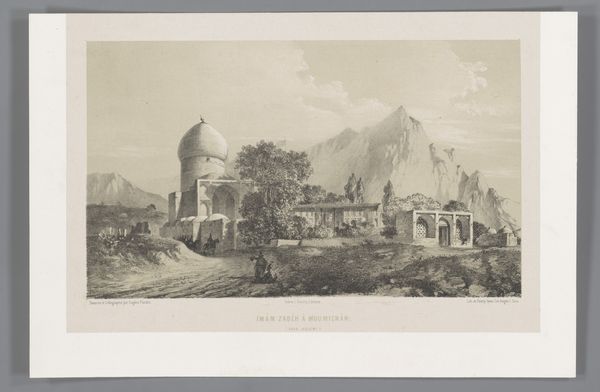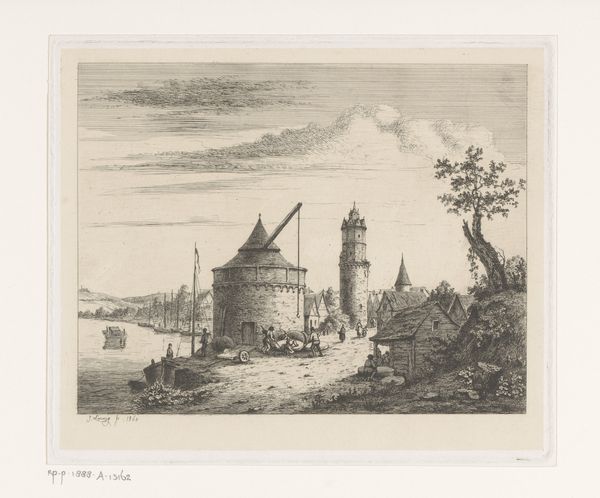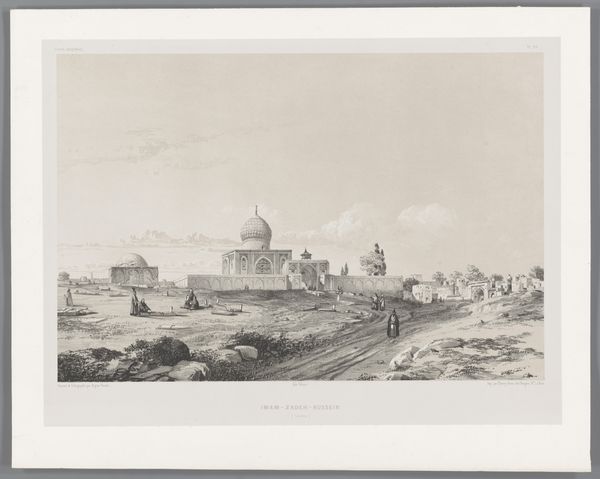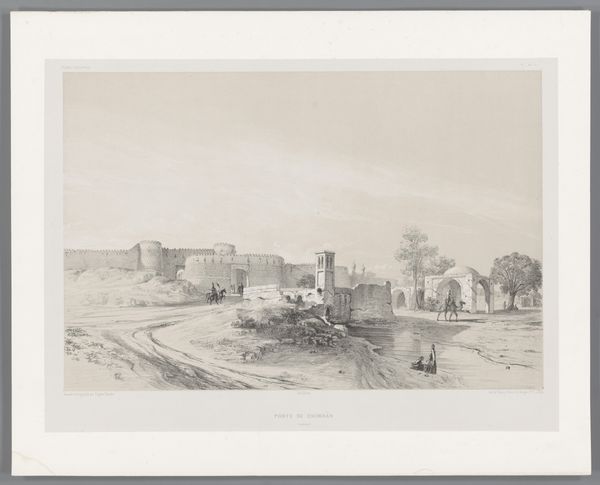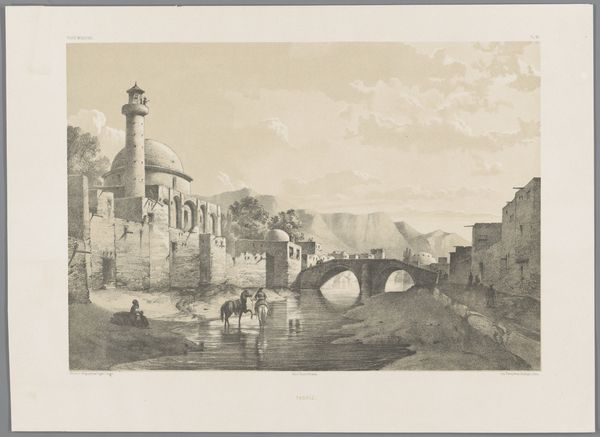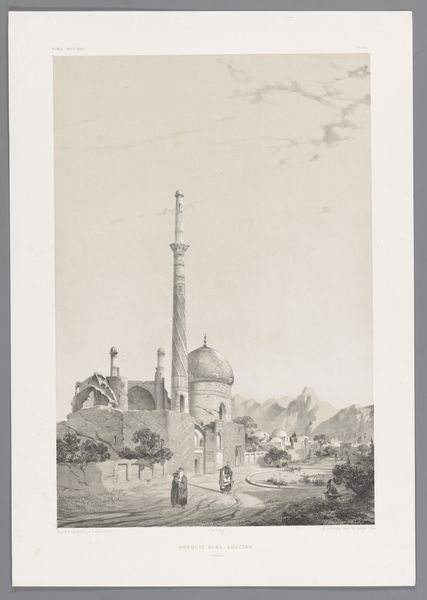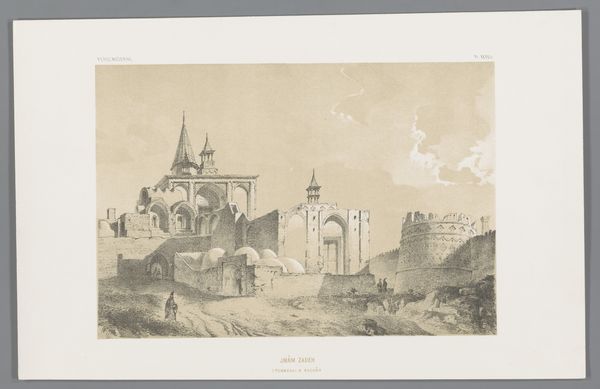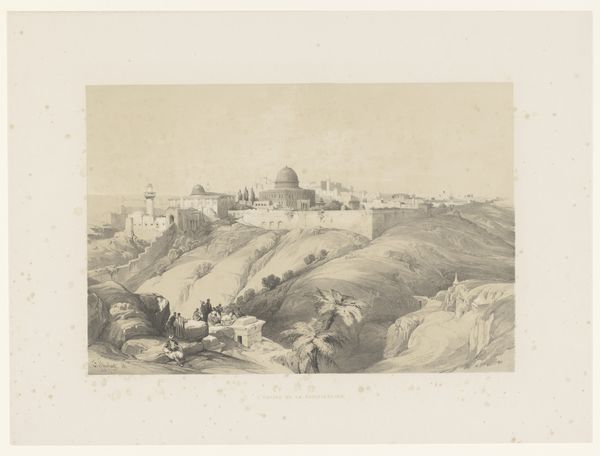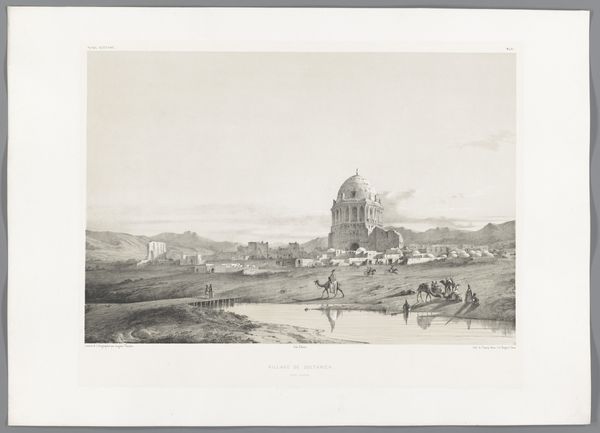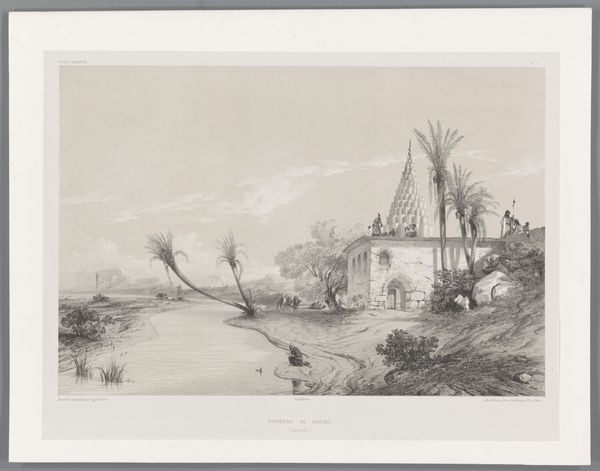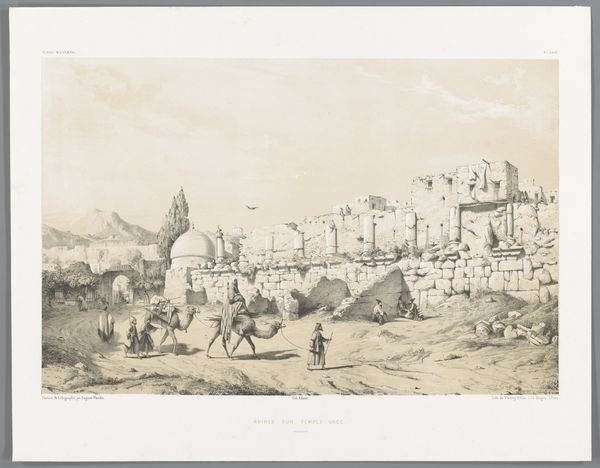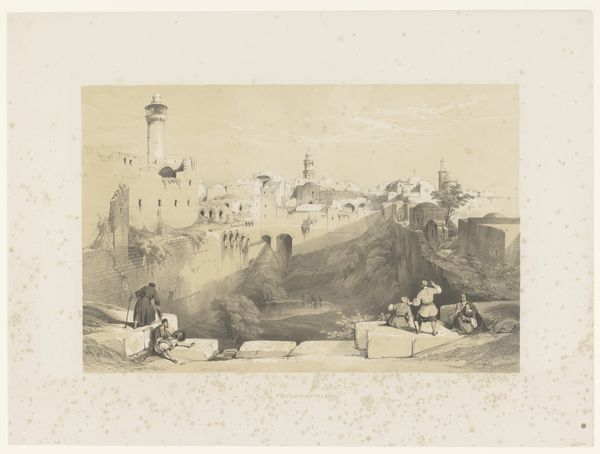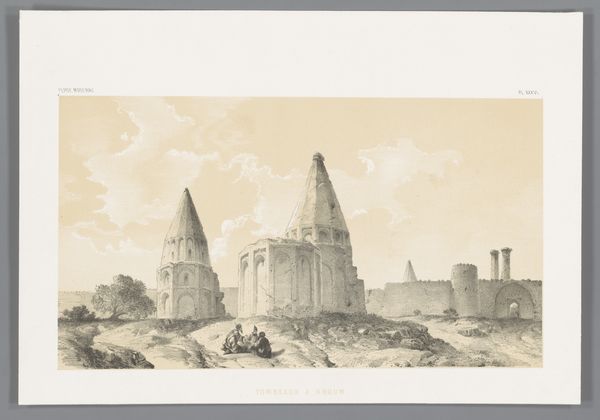
drawing, paper, ink
#
drawing
#
aged paper
#
light pencil work
#
pale palette
#
pencil sketch
#
sketch book
#
landscape
#
paper
#
personal sketchbook
#
ink
#
orientalism
#
sketchbook drawing
#
islamic-art
#
watercolour illustration
#
sketchbook art
#
watercolor
Dimensions: height 418 mm, width 568 mm
Copyright: Rijks Museum: Open Domain
Editor: This is Eugène Flandin's "Mosque of the Shah or Royal Mosque in Isfahan," made between 1843 and 1854, using ink and watercolor on paper. It has a delicate, almost dreamlike quality. What strikes you most about this piece? Curator: This image encapsulates the complexities inherent in Orientalist art. While seemingly a benign landscape, it perpetuates a specific gaze – a European perspective on the ‘East.’ Flandin’s travels and documentation served a colonial agenda, informing European power structures and solidifying cultural hierarchies. Do you notice how the figures are dwarfed by the architecture? Editor: Yes, they seem almost incidental to the landscape. Curator: Precisely. This visual imbalance reinforces the idea of European dominance. The “exotic” mosque is the spectacle, while the local people are rendered insignificant, mere props in the picturesque scene. It's also crucial to examine the idealized and depopulated representation of the Mosque, eliding the vibrant, lived reality of the space. What does this choice say about Flandin's intentions? Editor: I guess it silences the true identity. The image creates distance instead of understanding. Curator: Indeed. It presents a romanticized, perhaps even a fantasized, vision of the East. Consider, too, the act of sketching itself – who has the privilege to represent whom? What impact does that representation have? Editor: It’s interesting to consider how seemingly neutral landscape art can be loaded with so much cultural baggage. Thanks! Curator: It underscores the importance of critically analyzing the historical and social contexts in which art is produced and consumed. There's power embedded in every artistic choice.
Comments
No comments
Be the first to comment and join the conversation on the ultimate creative platform.

